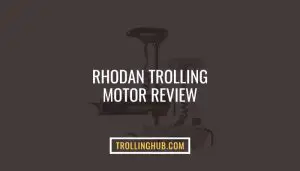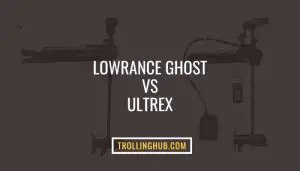Just like other electrical devices, trolling motors are also capable of encountering technical issues. However, you should never be in a rush of discarding the entire trolling motor whenever it encounters a problem.
In this article, we will be looking at some of the common engine mount trolling motor problems, their causes and viable solutions.
6 Common Engine Mount Trolling Motor Problems
Below are some of the reasons why your engine mount trolling motor might not be working as it should. Luck enough; these problems can easily be fixed at home.
- Battery Failure
Electric trolling motors are powered by batteries. However, there are times when the battery can fail to provide enough or no power at all to the trolling motor. This will make the trolling motor fail to work.
Other battery failure causes include:
- Poor charging of the battery
- Incorrect wire connection to the battery terminal
- Loose battery cables or corroded wiring connections
- Failing to carry out regular checks on the electrolyte levels of the battery
- Use of wrong battery charger
To fix the battery failure issue, you will have to first check if the battery has enough capacity to supply the trolling motor with enough power needed to offer thrust. By checking the voltage, you will be able to know whether you will have to recharge the battery if it is low. However in case of a total battery failure, you will have to replace the entire battery.
It is important to note that battery connections that are corroded can be a cause of motor not functioning. Always clean the battery posts and terminals on a regular basis to help fix this problem.
You can prolong the battery life by avoiding depleting the batteries since this will shorten its lifespan. Recharging the battery on a monthly basis will help maintain the batteries health during off-season.
- Poor Connection
Bad wiring connection can destroy the trolling motor. When not fixed effectively and fast, it can cause circuit damage. Using wires of the wrong size to connect the trolling motor to the batteries can cause issues since the wire can heat up leading to motor shut down.
In case of poor connection, it is appropriate that you use marine grade wires of the right length and size when connecting the trolling motor to the battery. Consider moving the batteries closer to the motor to reduce the distance the wire covers and chances of accidental damage.
Another concern when it comes to wire connections is corrosion. Always check the terminals for white powder and rust.
To help solve this issue, consider placing some dabs of dielectric grease on connections before you heat shrink to help reduce corrosion. Recheck to ensure the wiring is correctly done. In case you notice something is out of place, quickly rearrange the wiring connections.
- Circuit Breaker Issues
The main function of the circuit breaker is to help protect the trolling motor whenever the propeller jams, is stuck on the rocks or gets tangled in weeds. When the circuit breaker is missing, the trolling motor would need extra power to help turn the jammed propeller. With this, it risks burning up and getting damaged.
The circuit breaker will help break the circuit whenever the amperage gets to a certain point. This will eventually cut the power heading to the motor preventing burnout. To ensure maximum protection, it is advisable that you use circuit breakers with amperage of 60 amps unless the manufacturer advises otherwise.
Make it a habit of checking if the fuse in the wiring between the batteries and the trolling motor is working well. In case any fuse or switch is blown, ensure you immediately replace them.
- Loose Wiring
The trolling motor will not work well if there are corroded or loose wiring. Ensure you always check the plug since it might be wrongly or loosely connected. If loose, fix the plug by tightening the loose connections. If wrongly connected, redo the connection properly.
To help prevent loss of power that is caused by corrosion or loose connection, ensure you coat all the terminal connections using dielectric grease. If you decide to running wire extensions for battery wiring and trolling motor, it is advisable that you use the 6- gauge wire especially when the extension is more than 6 feet. In case the extension is shorter, you can go for the 8 gauge wire.
- Pin Broken in Rotary Switch
There are possibilities that the main rotary switch in the trolling motor is not in good condition. If it is not in a good working condition, fix or replace it using a new unit. There are times when the culprit is a broken pin in the rotary switch.
However, you should not panic since fixing this is very easy once you open the rotary switch. This is never a big issue for bow mount trolling motors. Stern mount trolling motors are the ones being controlled by turning the handle and can use the rotary switches with few exceptions.
- Propeller Pin is Broken
There are possibilities the pin driving the propeller is broken or bent. In such a case, you will have to replace the pin. Always check the propeller using your hand by trying to turn it. When the propeller has no issues, it will easily turn with the slightest magnetic drag hint.
However, when the propeller has issues, the motor will be prevented from providing enough thrust. Remove the propeller, clean it, return it back and check if there is any change. When the propeller fails to work well, you will have to consider replacing it.
Conclusion
Being able to fix the trolling motor will save you money and time. This is because you will not have to spend money and time repairing the motor. Knowing the basic engine mount trolling motor parts will be of great help. However, whenever you are not sure about anything, it is highly recommended that you seek professional help to avoid causing further damage.



